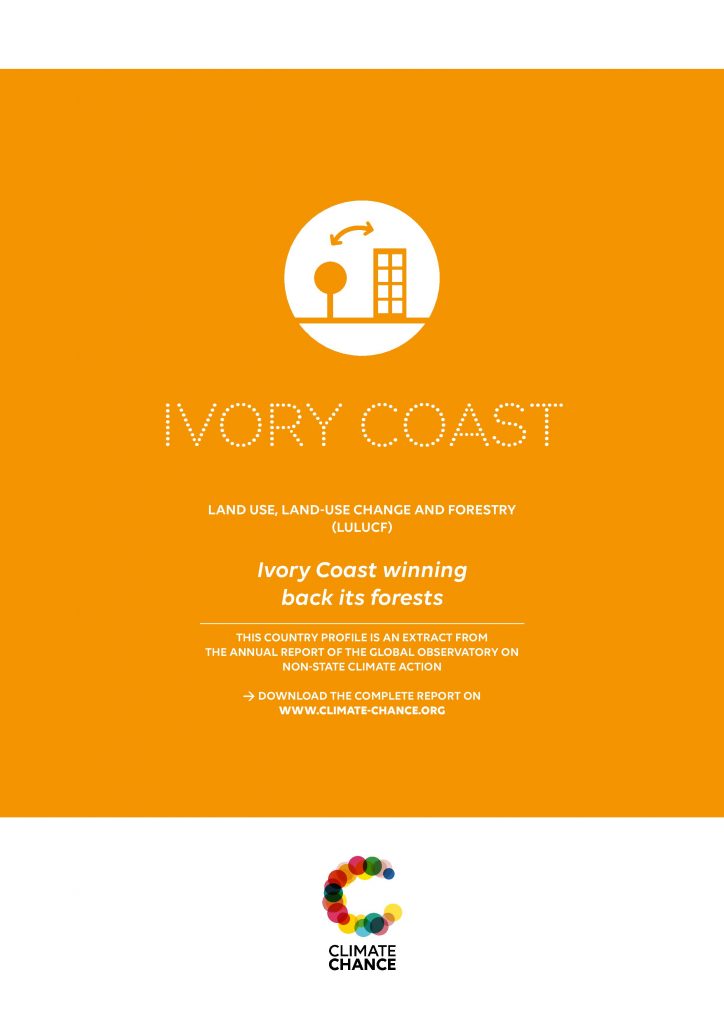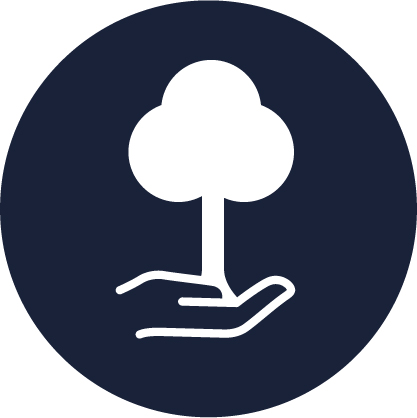Ivory Coast • Winning back its forests
In the country’s Intended Nationally Determined Contribution (INDC), submitted in preparation for the COP 21 in 2015, Côte d’Ivoire signaled its intention to reduce gross GHG emissions by 28% by 2030 compared to 2012 levels.

Introduction
In the country’s Intended Nationally Determined Contribution (INDC), submitted in preparation for the COP 21 in 2015, Côte d’Ivoire signaled its intention to reduce gross GHG emissions by 28% by 2030 compared to 2012 levels. Due to the lack of precise data and measurement difficulties, emissions from land use, land use change and forestry (LULUCF) were not specifically included in the low carbon scenario, but have since become the subject of greater attention at the national and international levels. The interest in this issue is due to the fact that Côte d’Ivoire based its development on agricultural expansion, which is the primary factor behind the loss of 3/4 of the country’s forests: in 2015, the country had 3,401,146 hectares of forests, down from 16 million hectares in 1900.
Forest recovery is a priority for the country, not only in order to meet its international commitments in terms of reducing GHG emissions, but also to preserve local socio-economic and environmental conditions. Furthermore, building and adhering to sustainable strategies is now seen as essential for this developing country, which hopes to continue its strong growth record. NGOs, companies and local communities working in partnership with state bodies are undertaking to help alleviate the catastrophic decline of Ivorian forests. This study on emissions from Côte d’Ivoire’s LULUCF sector provides an overview of the trends and causes, while also highlighting the various operators being mobilized to recover the country’s forests
Contents
1 • Climate crisis and major socio-economic issues
2 • Reduction of emissions in the LULUCF sector
3 • Diversity of causes and predominance of agriculture
• Deforestation in figures
• Disparity of involvement levels and deforestation stakeholder
4 • Actions to reduce emissions from the LULUCF sector
• The LULUCF sector at the heart of national policy
• The central role of REDD+
• Examples of activities in civil society, the private sector and local communities
Conclusion
This study of LULUCF emissions in Ivory Coast has demonstrated the urgent need for the country to regain its forest cover. With its forest resources practically depleted, a high level of vulnerability to climate change, social improvements needed, and the desire for economic growth, the country has a significant number of challenges to contend with. It has become clear that proper management of listed forests will be an essential factor in responding to these challenges. The LULUCF emissions sector is a multi-lateral issue: forest protection efforts are linked to the agriculture, energy and mining sectors. As such, it mobilizes significant amounts of resources and a range of stakeholders. REDD+, national and international NGOs, food manufacturing firms, producer organisations in agricultural sectors and local communities are all knuckling down to tackle the monumental task of recovering and preserving Ivory Coast’s forest cover.



